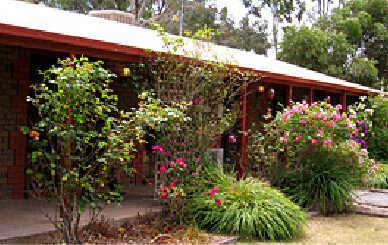Pictures below are the three Labradoodle coat types found in the breed.
We have chosen pictures of the coat types in a similar colour range, so as not to distract from the “look” of the coats themselves:
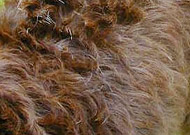
Hair: also known as flat or slick coat. This is a shedding coat and is NOT allergy friendly.
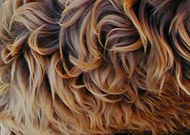
Fleece: also known as borderline or wavy, not shedding, an allergy friendly coat.
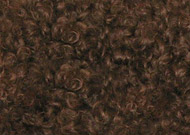
Wool: also known as curly, not shedding, an allergy friendly coat.
While these photos are excellent examples of the differences the three coat types have in their “look,” it is key to remember that there are variations still found within the coat types themselves, and it is not just the “look” of a coat that determines the coat type but most importantly the texture of the coat determines this.
Not all breeders are experienced in selecting coat types, so make sure that you find a breeder who not only knows the look but also the correct texture of the coat type you are looking for.
Below we have provided pictures of both Puppy and Adult dogs in all three coat types in a similar colour range. We have pictured all three coat types with the same dogs for their puppy and adult photos, so that you can see how the coat types have developed from puppy to adulthood.
Puppy
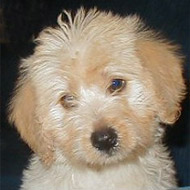
Hair: Model/Emma
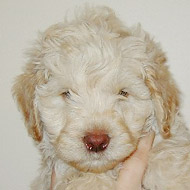
Fleece: Model/Shamas
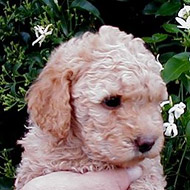
Wool: Model/River
Adult

Hair: Model/Emma

Fleece: Model/Shamas

Wool: Model/River
Because the breed is still in the development stages, we still are seeing some variations within the three coat types themselves.
Some breeders are working on a “new style wool” or “loose.” Wool coat that is easier to maintain and not as thick as the original wool, but still has the same texture, curl and high success with being allergy and asthma friendly like the “original” wool coat.
Also, your fleece coats, while, overall, are softer than your wool coats in texture, still have some texture variation within the fleece coat type.
The Australian Labradoodle requires varying degrees of grooming depending on their coat type. There are three main coat types (Hair/Fleece/Wool) with some variation found within the coat types noted below.
The Hair
(Dog hair texture either feathering, scruffy, or wavy) is a shedding coat in varying degrees and will need a quick brushing/combing about once a month depending on the density and length of the coat. NEVER shave your hair coat’s body. A light trimming might be required with scissors but usually not. However, we do not have any hair coat in Sunset Hills, because our puppies are all multi-gen.
The Fleece
(Soft Angora type texture, wavy or loose spiraling coat) is an allergy and asthma friendly coat and will need to be brushed/combed thoroughly about every two-three weeks. This coat usually requires trimming once or twice a year.
The Wool
(Dense curly coat with a lamb’s wool texture) is an allergy and asthma friendly coat with the highest rate of success of the three coat types (Hair/Fleece/Wool). It will need to be brushed/combed thoroughly about once a week. This coat also requires trimming about three-four times a year.
All allergy and asthma friendly labradoodles have a coat change from puppy to adult usually between 6-8 months of age. Because they do not “shed out” the old coat, you must groom the old dead coat out or it will cause severe matting in the new coat.
During their coat change, it is recommended that you groom them daily. The coat change can last anywhere from a week to several weeks. (This is usually the time when owners decide that their beautiful furry doodle needs a shorter look.)
Note: Not all Labradoodles are Allergy and Asthma friendly. The Australian Labradoodle has been very successful with being allergy and asthma friendly, but they are not 100% guaranteed. We do recommend that if you have the opportunity to meet one of these wonderful dogs in person that you should check to see if you have any reactions before you make your decision in purchasing your new puppy.
We recommend that any family or person who suffers from dog related severe allergies or asthma should look into a Wool coated labradoodle as they have the highest success rate.
For labradoodle sizes, please go to our Size link.
For pictures and definitions of the colours of the Australian Labradoodle, please go to our Colours link.
For the information on grooming, please go to our Resource link.
